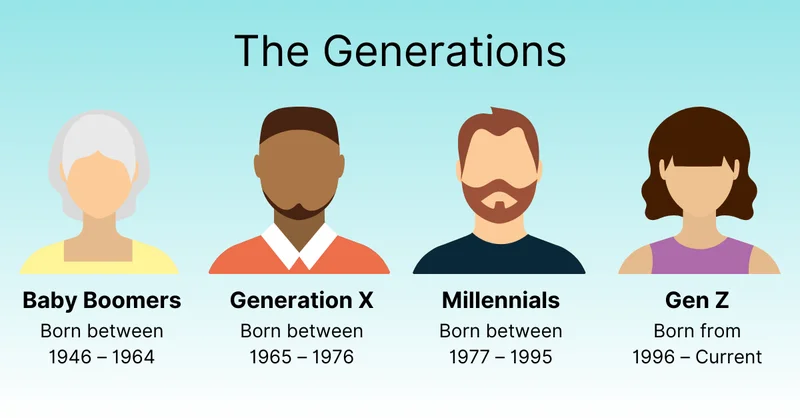XLM Insight | Stellar Lumens News, Price Trends & Guides
XLM Insight | Stellar Lumens News, Price Trends & Guides
I keep hearing the same tired, contradictory narratives about Generation Z, and frankly, they’re driving me crazy. One minute, headlines scream about a generation overwhelmed by anxiety, crippled by despair. The next, my screen is filled with images of those same young people leading sophisticated, tech-fueled protests that are shaking governments to their core. So, which is it? Are they broken or are they brilliant? Apathetic or activated?
The media loves a simple story, and the latest one is the so-called “Gen Z split”—the idea that the cohort born roughly between 1997 and 2012 is fracturing into two distinct camps. You have the ambitious entrepreneurs on one side and the emotionally fragile quiet-quitters on the other. It’s a neat little box. But it’s wrong.
I’ve spent my career analyzing complex systems, and what I see in Gen Z isn’t a split. It’s not a fracture. It’s a powerful, unified response to a world of broken code. This isn’t a generation; it’s the planet’s first generation of systemic auditors. They’ve inherited a world riddled with bugs—in our economy, our politics, our mental healthcare—and they are the ones running the diagnostics. Their pain and their power are not a contradiction. They are two outputs of the exact same process.
Before you can fix a system, you have to understand exactly where it’s failing. And the data coming from Gen Z is a devastatingly clear bug report. Look at the alarming rise in the suicide rate for young adults, which is now higher for the `Gen Z generation years` than it was for `millennials` a decade ago (Suicide claims more Gen Z lives than previous generation • Stateline). This isn’t a vague feeling of sadness; it’s a quantifiable crisis, with the increase disproportionately hitting Black and Hispanic men.
Experts point to a storm of factors: the corrosive pressure of social media, stagnant economic prospects, and a deep-seated cultural resistance to seeking help. When a young man like Julian Rivera in New York, struggling with depression and the weight of providing for his family, finally reaches out for help only to find no one will call him back, that isn’t a personal failure. That is a system failure. When federal funding for mental health crisis teams and LGBTQ+ suicide helplines gets slashed, that’s a critical error message flashing in bright red.
This is the pain of a generation that has been overprotected in the real world and completely underprotected in the virtual one, as Jonathan Haidt so brilliantly put it. They’ve been handed smartphones that connect them to all of human knowledge and all of its cruelty, but they haven’t been given the tools to navigate it. So what happens when a generation sees the error messages piling up everywhere they look? They start writing a report. And sometimes, that report is written in tears and despair. But that’s only half the story.

Because here’s the other thing about finding a bug: once you’ve identified it, you can start working on a patch. And all across the globe, that’s exactly what Gen Z is doing. Look at Africa. In Madagascar, Kenya, and Morocco, it’s not politicians or established activists leading the charge against corruption and government failure—it’s kids organizing on TikTok, Facebook, and Discord (From Madagascar to Morocco: Gen Z protests shake Africa).
When I first read about the protests in Madagascar, I honestly just sat back in my chair, speechless. Young people, facing down armed security forces, weren’t just angry; they were organized, using a cartoon skull from a Japanese anime series, One Piece, as a shared symbol of rebellion against a corrupt world order. This is a globally networked, decentralized movement, a kind of open-source revolution where tactics and symbols are shared across continents in an instant—it means the gap between an idea in Nepal and an action in Nairobi is closing faster than any government can possibly track.
They’re using the very digital tools that have been blamed for their anxiety to build solidarity and demand accountability. This isn’t a contradiction; it’s a paradigm shift. They are taking a system designed for distraction and turning it into a tool for mobilization. This is a process of debugging—in simpler terms, it’s finding what’s broken and rewriting the code, live, on the streets.
This brings us back to what that business professor, Jeff LeBlanc, observed in his classroom. He noticed his Gen Z students still value the same things older generations did, like kindness and communication. But they question them more deeply. They ask if kindness is “performative.” They debate what leadership even means when the world is so unstable. This isn’t a sign of confusion. It’s the meticulous thought process of an auditor examining a flawed system and asking: Is this component working as intended?
This moment feels like the dawn of the printing press, a technological leap that completely rewired how information and power flowed through society, sparking revolutions and reformations. The networked mind of Gen Z is today’s printing press. Of course, this path is incredibly dangerous. Protesters are being met with brutal, sometimes lethal, force. But what choice do they have when the systems they were promised would protect them are the very ones that are failing?
So, no, I don’t buy the "Gen Z split." This isn't a broken generation. This is a generation holding up a mirror to a broken world. Their rising anxiety and their rising activism are not two different stories; they are the cause and effect of a single, profound act of seeing things exactly as they are. They are the first to grow up fully immersed in a global system, and they are the first to be able to diagnose its failures with such clarity and speed. They aren't lost. They are the immune response. And we should all be paying very close attention to the world they are trying to build.